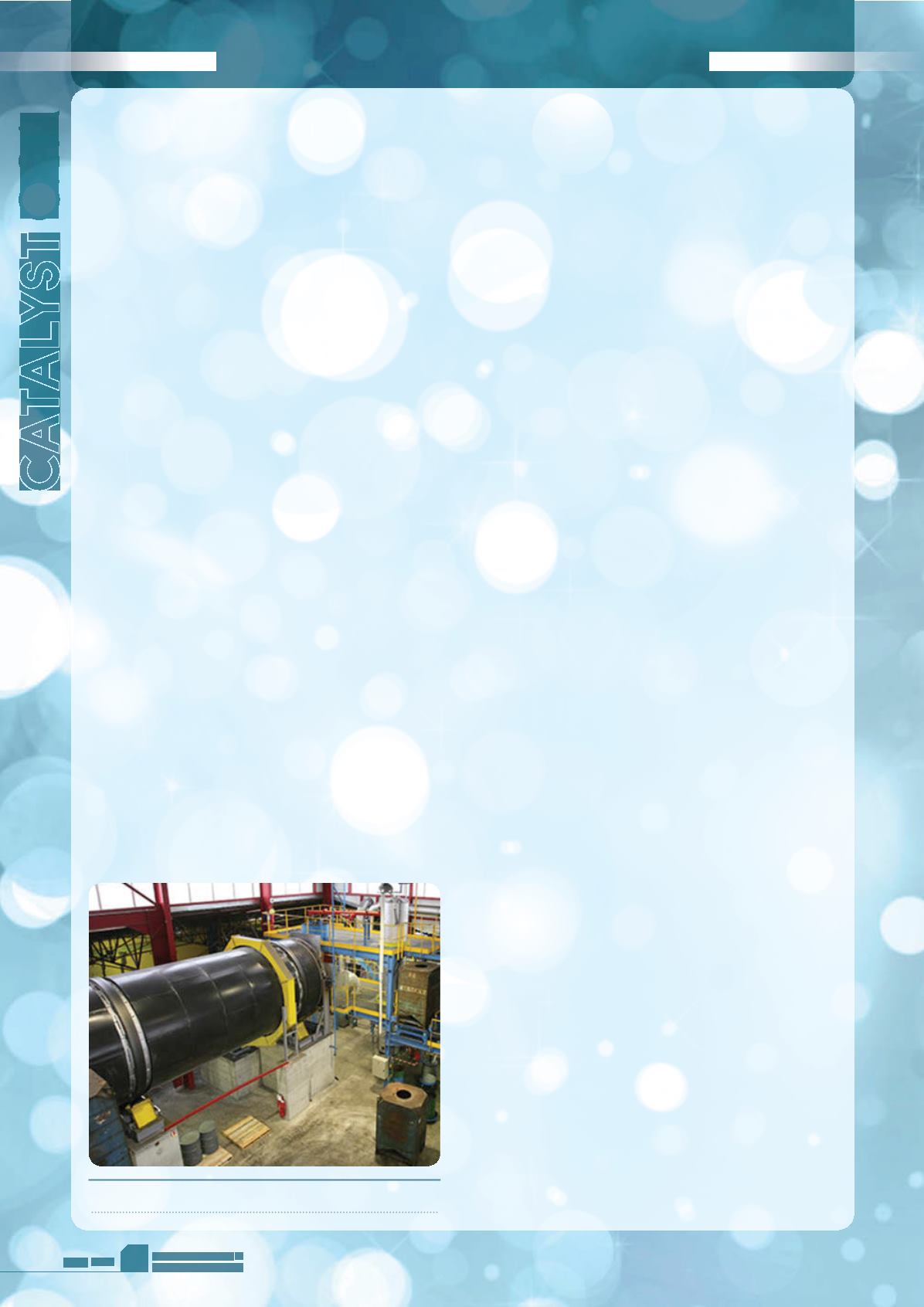
June
2016
HYDROCARBON
ENGINEERING
80
Q&A
Q
Explain why catalysts are so crucial to refining and
petrochemical operations.
Catalysts are not just crucial, they are fundamental to refining
and petrochemical operations, going back over 75 years. Eurecat
has been in operation for over 30 years, working to maximise
catalyst value through ex-situ sulfiding/activation (Totsucat®
process) and regeneration for reuse.
q
To what extent has the downstream catalyst market
grown over the past 10 years, and what have been
the driving factors?
The catalyst market over the past 10 years has been mainly
driven by the switch to ultra low sulfur diesel and gasoline,
and increases in pre-treatment severity for fluid catalytic units
and hydrocrackers due to new regulations (such as Tier 2 and
Tier 3, Euro V, and China V). Eurecat has seen the overall
catalyst market increase by two to three times over the past
10 years. The factors driving this growth have been increased
fuel demand, subsequent increased refinery throughput and
refinery expansion, as well as regulations requiring ultra low
sulfur distillates, gasoline and other transportation fuels.
q
How have catalysts changed since your company
began operating in the industry?
Catalyst activity has increased dramatically from 10 years ago.
Eurecat customers report that regenerated/regenerated and
rejuvenated catalysts today have higher activity than the fresh
catalysts from 10 years ago. Today’s catalysts each require
their own specific ex-situ multi-step sulfiding and activation
processes to achieve activity that is equal to in-situ sulfided
activity.
q
How are new catalysts or catalyst technologies tested,
and how long does the development process tend to be?
Eurecat works closely with the fresh catalyst manufacturers to
develop its proprietary recipes for Totsucat (ex-situ
activation), Cracked Feed Protection (CFP), Passivation (for air
loading) and Hydrocracking Catalyst Activation with Acidity
Protection (HC-AP). The result is that catalyst manufacturers
can support their performance projections with Eurecat’s
ex-situ activation equal to in-situ activation.
Q
What are the main applications for your company’s
catalysts or catalyst technologies within the refining
and petrochemical industries?
Eurecat’s technologies focus primarily on the catalyst ex-situ
activation and spent catalyst regeneration for reuse or resale.
Eurecat works closely with the fresh catalyst suppliers to
develop new catalyst activation methods such as HC-AP, which
can reduce the hydrocracker startup time by 50% or more, as
well as Totsucat
(totally sulfided catalyst)
and Passivation, that
allow for loading activated catalyst under air.
q
What has been the company’s biggest technological
breakthrough in terms of downstream catalysts?
There have been four key breakthroughs for Eurecat: CFP,
HC-AP, Passivation and Palladium Catalyst Reactivation. CFP is
an option for the Totsucat, which allows cracked feed to be
introduced immediately at startup, instead of waiting the
typical three days. HC-AP provides Totsucat with acidity
protection for hydrocracking catalysts, which eliminates the
need for ammonia and provides the fastest and safest
cracking reactor startup. Startup times can be reduced by
50% or more. Passivation is an additional treatment to
Eurecat’s Totsucat ex-situ sulfiding and activation, which
allows the activated catalyst to be handled and loaded
under air. Standard Totsucat requires inert loading. Moreover,
in the coming months, Eurecat will launch a new process that
will allow the Totsucat catalyst to be transported in
supersacks instead of bins, as well as loaded under air. Lastly,
Eurecat's Recover Activity and Increase Selectivity (RAISE®)
process has been developed for palladium-based
hydrogenation catalysts.
q
Where do you see the downstream catalyst industry
in 10 years’ time?
As Yogi Berra once said, “It is tough to make predictions,
especially about the future.” With that said, Eurecat expects to
see higher and higher activity catalysts that are tailored to
specific feeds and conditions, instead of one or two high activity
catalysts for all distillate or gas oil applications. Eurecat sees
continued growth in its Totsucat ex-situ activation, as more
refineries maximise throughput and eliminate in-situ sulfiding
related problems. Regeneration for reuse continues to grow as
the regenerated/rejuvenated activity of new catalyst generations
exceeds the fresh catalyst activity of prior generations.
Eurecat foresees an increased emphasis on the catalyst
management and handling for environmental and safety reasons.
New catalyst unloading technologies, such as CARBODUMP®,
enable much more efficient catalyst removal from reactors,
without water flooding or personnel entry into reactors during
unloading. Pool management among different refineries
promotes the reuse of regenerated catalysts across a geographic
area, or across regions of the world.
q
How has the fall in oil prices affected the downstream
catalyst industry over the past 12 months?
The overall decrease in commodity prices that accompanied the
oil price decline reduced the cost difference between fresh and
regenerated catalyst to historic lows. However, a refiner
regenerating its own catalyst for reuse can still achieve cost
savings of 65 - 75% compared to fresh catalyst.
TIM CAMPBELL, EURECAT US, INC.
Eurecat regeneration unit.


